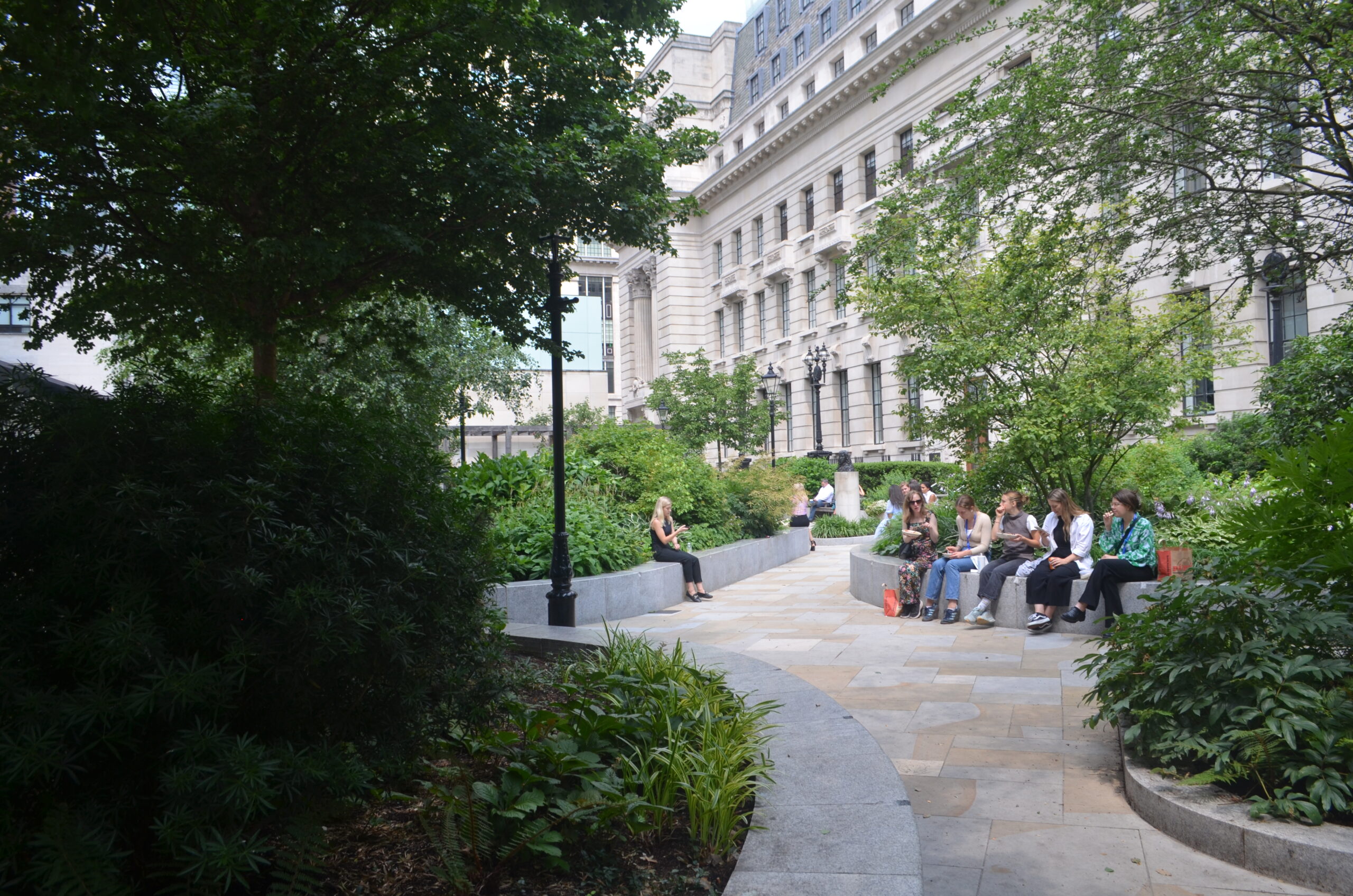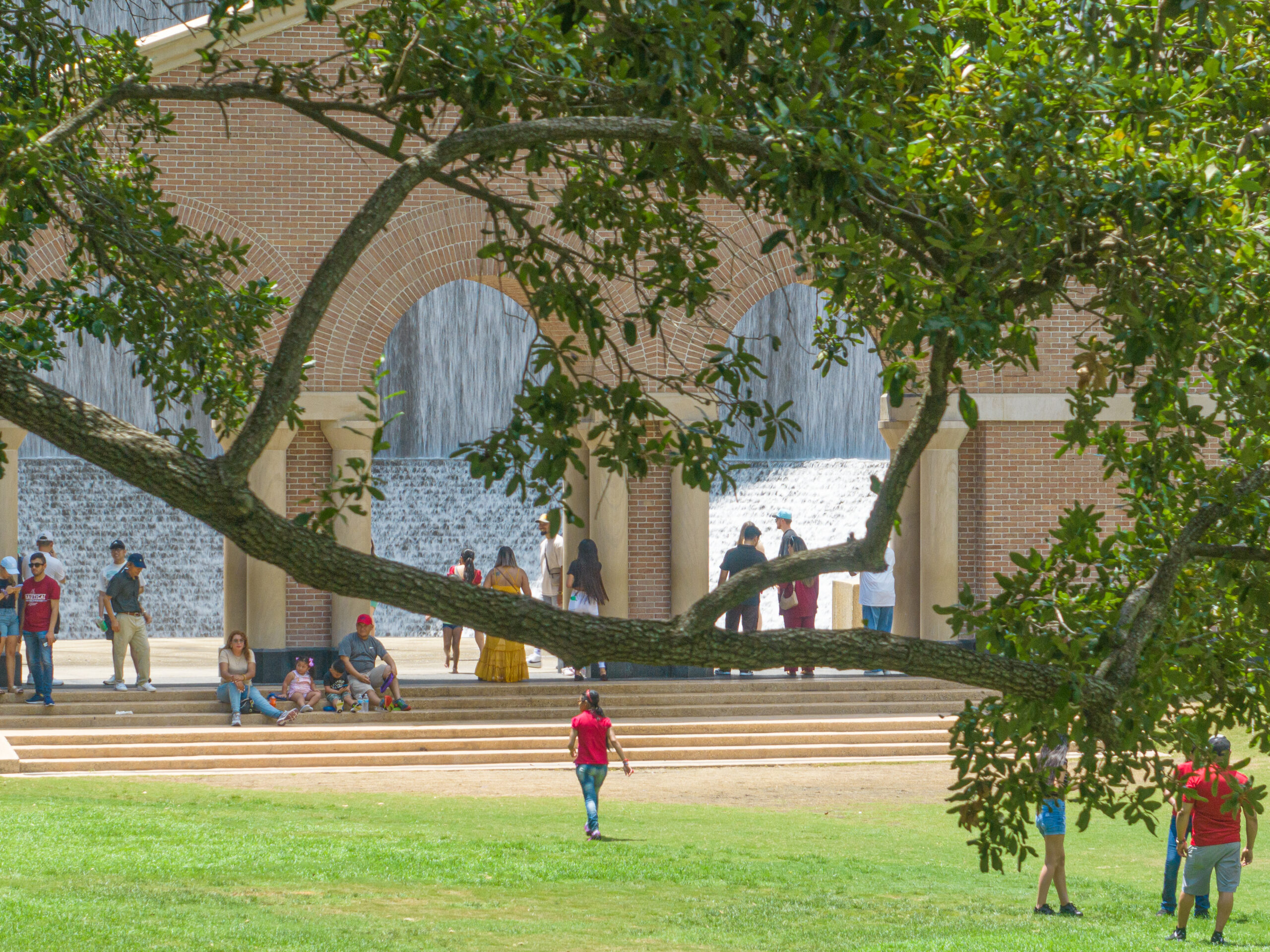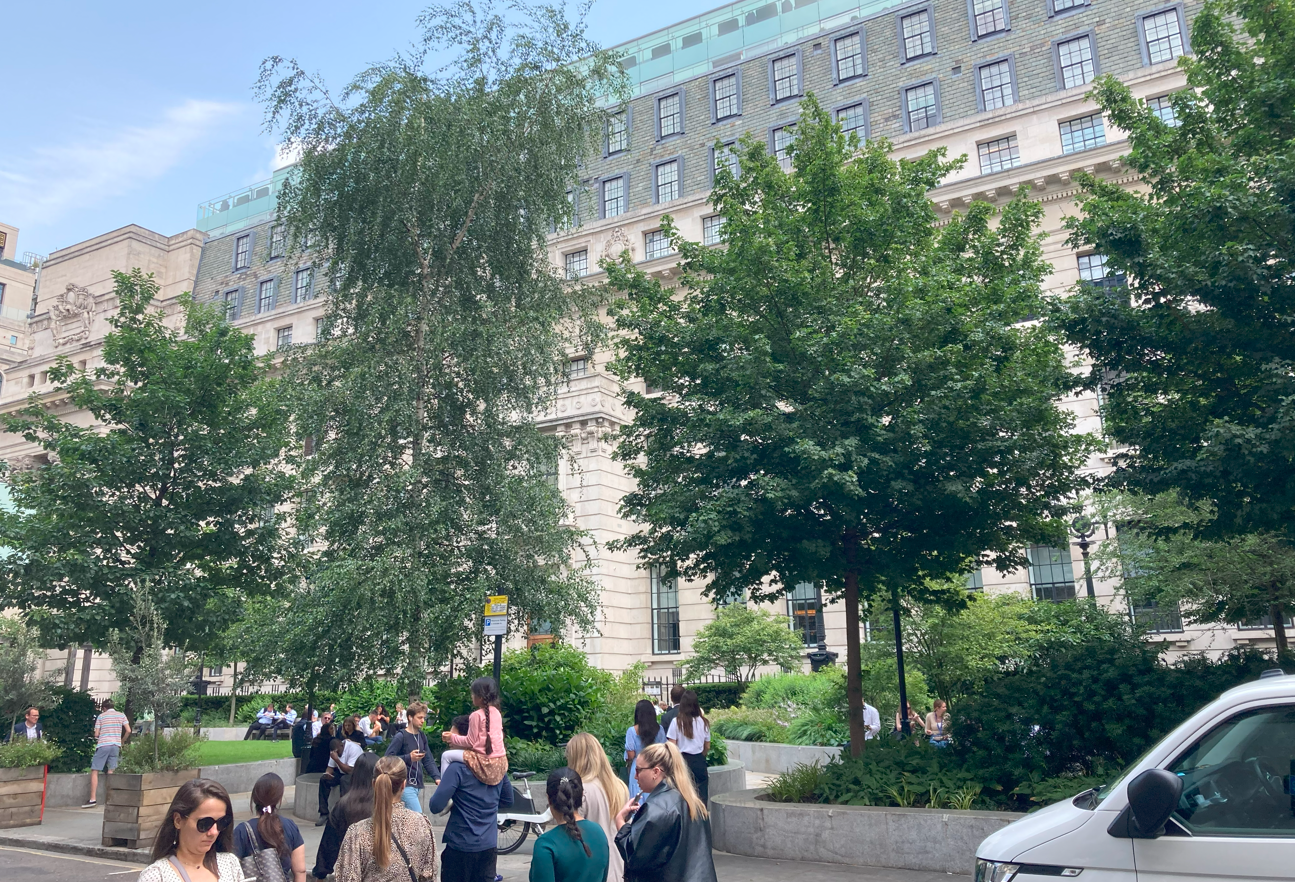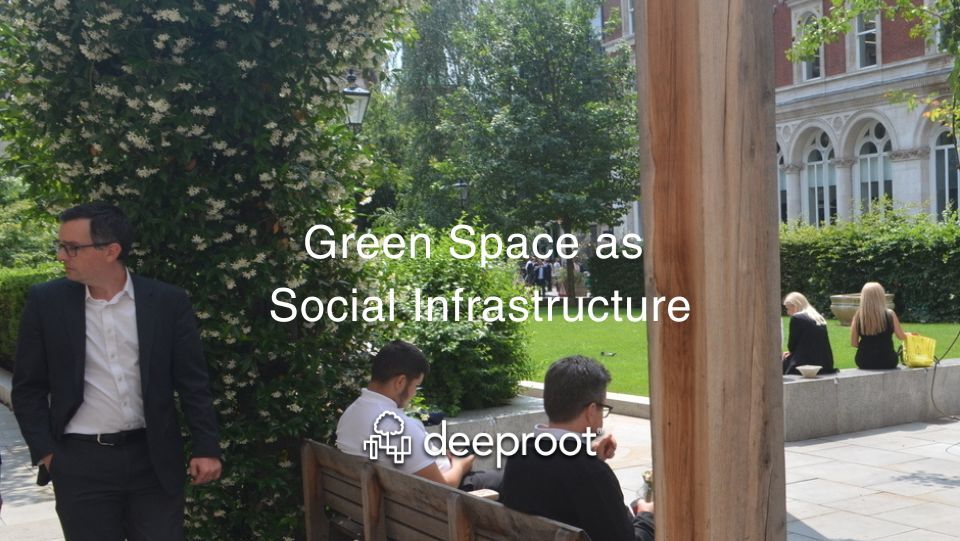Introduction
What are the benefits of city trees? One of the first (and most reasonable) responses is that they have a positive environmental impact: not only do mature trees sequester atmospheric carbon, but they improve air quality and assist in stormwater treatment. Trees likewise have an important economic influence, reducing energy usage by providing natural cooling shade — which simultaneously helps fight climate change by lowering our overall energy consumption.
But the value of urban forestry is multifaceted: What is perhaps underrecognized, but nevertheless critical, is how green space can improve the social health of a community. When utilized as a cornerstone of thoughtful space-building, trees serve as a connection device — a foundational tool to assist in bringing people together in the public realm.
This is the purpose of social infrastructure.
But what exactly is social infrastructure? And how do city trees fit into its mission?

Social Infrastructure and Efficiency Culture
Social infrastructure should be viewed as a parallel category to — or perhaps even a subset of — physical infrastructure: the public network of structures and spaces that establishes the functionality of a community: roads, bridges, pipes, sewers. While this framework prioritizes the movement of humans and their resources, social infrastructure instead prioritizes connection: how (and, more importantly, where) do we interact with one another in a public forum?
Professor Eric Klinenberg, one of the industry’s chief advocates, loosely provides this definition of social infrastructure (as noted in a review of his book, Palaces for the People): “The physical elements of a community that act as a conduit to bring people together and build social capital.” Or, as journalist Tiffany Owens Reed suggests: “Social infrastructure is what transforms cities from collections of buildings and roads to communities worth caring about.”

One of the primary obstacles to establishing a robust network of social infrastructure is the very way we think about and develop cities, particularly in the United States. Our infrastructure is built to deliver us from one place to another in the quickest way possible — an example of “efficiency culture.” Interestingly, Klinenberg refers to efficiency as “the enemy of social life.”
When you’re in a hurry, public space becomes transitory — not a destination in itself. Creating accessible and abundant social infrastructure, then, requires a shift in thinking. But it also crucially requires physical space. This can take the form of libraries and recreation centers, but also parks and courtyards: outdoor gathering areas, the most popular of which are thoughtfully designed with flourishing greenery and available shade.
Trees, Green Space, and Social Gathering
Outdoor green space is one example of social infrastructure, and trees are used as one of its primary building blocks. Viewed from this perspective, tree-planting — and ensuring those trees have access to adequate soil volume for healthy growth and longevity — is a prudent strategy for encouraging socialization and connectivity, a way to welcome residents to the public realm.
Creating space for social infrastructure doesn’t just happen; it requires deliberate prioritization at the policy and city level. As the Urban Land Institute (ULI) notes, “The best social infrastructure happens through intentional action, design, and planning. To embed it throughout a development, space needs to be specifically dedicated to becoming a gathering point.”

One of the primary ways in which we can find space for social infrastructure, as identified by the ULI, is to “use the spaces in between.” This is where landscape architecture shines: utilizing outdoor space in unique, productive ways “where people might gather, and create or improve existing pedestrian walkways and paths, high-quality streetscapes, and pleasant, shared building entrances, atriums, or seating areas.”
The simple fact is that people are likely to spend more time in shady, tree-covered areas than those without — and this encourages socialization. Reed calls this phenomenon “second-gear presence.” She states that this is “the leisurely, relaxed mode of being that’s possible when a city offers adequate green spaces, plazas, and public squares. It’s the opposite of first-gear presence, which involves moving as efficiently and quickly as possible (usually in a car) from one destination to another with a clear goal in mind.”
In the end, social infrastructure can take many forms. But in the public outdoor realm, the value of urban forests in the formation of welcoming gathering space cannot be overlooked — trees serve as a calming invitation to spend time and interact with your neighbors.








Leave Your Comment